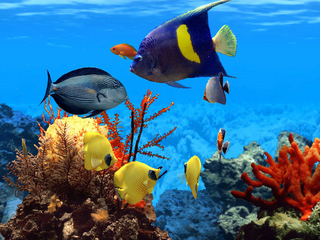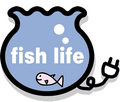Difference between revisions of "Fish Life"
From Sega Retro
m (Text replacement - "publisher=Sega" to "publisher=Sega Enterprises") |
m (Text replacement - "publisher=Sega Enterprises" to "publisher=Sega Enterprises, Ltd.") |
||
| Line 1: | Line 1: | ||
{{Bob | {{Bob | ||
| bobscreen=Fish Life Virtual Aquarium Screenshot.png | | bobscreen=Fish Life Virtual Aquarium Screenshot.png | ||
| − | | publisher=[[Sega Enterprises, Ltd. | + | | publisher=[[Sega Enterprises, Ltd.]] |
| developer=[[Sega AM5]] | | developer=[[Sega AM5]] | ||
| system= | | system= | ||
Latest revision as of 09:11, 11 November 2024
| Fish Life | |||||||||
|---|---|---|---|---|---|---|---|---|---|
| Publisher: Sega Enterprises, Ltd. | |||||||||
| Developer: Sega AM5 | |||||||||
| Genre: ETC | |||||||||
| Number of players: 1 | |||||||||
|
This teeny-tiny article needs some work. You can help us by expanding it.
Fish Life[3] (フィッシュライフ) is a virtual aquarium developed by Sega AM5.[4]
Fish Life was only ever produced in small quantities in Japan in around 2000, and may not have even passed its location test.
Contents
Gameplay
Fish Life is a simulation of a fish tank with an added touch screen, allowing users to interact with virtual fish. Users can call the fishes (fishes will react to users voice causing a number of reactions on the fishes like happiness, anger, sadness) , feed the fishes and watch them grow, draw in the screen (users can draw a fish and watch it being followed by the other fishes while moving it), when users touch a fish his name and species are displayed and it's even possible to play music when touching the fish as if they were piano keys. While designed to be placed in an arcade environment, it is not an arcade game, instead being designed as "interior decor" or "healing art"[5]. Fish Life is free to play but has no goals and never "ends", instead acting more of a distraction. It does not accept currency and loops endlessly to relieve boredom.
Hardware
Fish Life is composed of two parts; the HKS-0200, the main unit, based on Dreamcast Hardware, uses the same GD-ROM format of storage for software and acts as a base for the other part, the HKS-0100, a 15 inch touch screen monitor with sound recognition capabilities. The HKS-0200 can be used as a stand alone unit when connected to a tv (for interior decor) or combined with the HKS-0100 for the full experience, in this case the set is called HKS-0300.
Production credits
- Producer: Tokinori Kaneyasu
- Planner: Kenya Yamashita
- Programers: Hideo Kusakado, Kanichi Sousumi, Tomohiro Nozue
- Designers: Satoru Yamamoto, Naoaki Kusakabe
- Music & Acoustic Design: Kazuhiko Nagai
- Special Thanks: Kiyoshi Endoh
Magazine articles
- Main article: Fish Life/Magazine articles.
Artwork
Screenshots
Photo gallery
Physical scans
External links
- A video demonstration of Fish Life Dreamcast mode at Youtube
- A 2nd video demonstration of Fish Life with some facts about it at Youtube
- Article at The Dreamcast Junkyard
References
- ↑ https://www.famitsu.com/news/200005/09/n04.html (Wayback Machine: 2000-06-20 19:10)
- ↑ 2.0 2.1 Edge, "August 2000" (UK; 2000-07-18), page 152
- ↑ http://www.sega.co.jp:80/fishlife/index_e.html (Wayback Machine: 2007-07-11 04:19)
- ↑ https://segafish.museebolo.ch/en/historique/ (Wayback Machine: 2019-05-28 15:33)
- ↑ Official Dreamcast Magazine, "October 2000" (UK; 2000-09-07), page 30
- ↑ https://segafish.museebolo.ch/en/logiciel/ (Wayback Machine: 2019-05-28 15:35)










